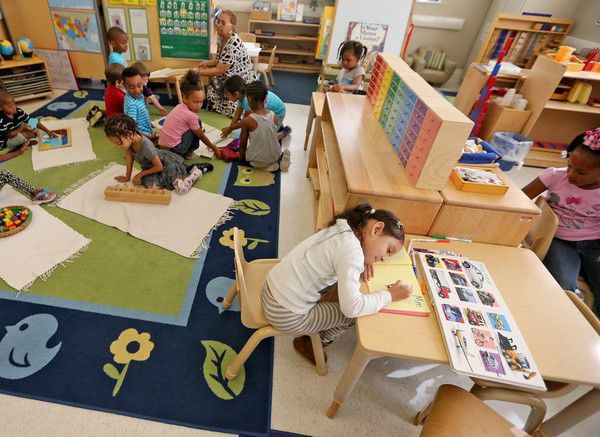
Chicagoans have at all times shopped on State Street.
That’s just about been the road’s cause for existence for the reason that late 1860s when Potter Palmer gambled on its future by constructing the Field & Leiter division retailer there and his grand Palmer House lodge.
But how about residing on State Street? Or going to highschool there? Maybe even kindergarten?
Retail purchasing stays the guts of State Street’s identification, however the thoroughfare has developed over the previous couple of many years, changing into a house to schools and school dorms, the Gene Siskel Film Center and the Harold Washington Library.
And now, as we wrote in an editorial on Sunday, State Street is poised to reimagine itself once more, presumably in probably the most complete manner since the same effort in 1995, in order to profit from the Chicago economic system of the subsequent 25 years.
The Chicago Loop Alliance, State’s Street’s city-approved caretakers since 1929, introduced final week that it’s launching a year-long research of each facet of the road, from retail and industrial exercise to public areas and site visitors move.
Why is that this so essential?
Because we’re speaking State Street.
“State Street is a symbol of Chicago,” mentioned architect Ernest C. Wong, founder and principal of Site Design Group, who will lead the research.
No massive capital tasks
We’re wanting to see what the research comes up with. In the meantime, listed below are some early ideas.
City Hall ought to be cautious of pouring cash into main architectural modifications. That $24 million State Street Mall of the 1980s was a bust, and we will’t say far more for the CTA’s $41 million Loop Link bus transit system, a complicated internet of devoted bus lanes.
An enormous public works venture isn’t what State Street wants, though the present streetscape and sidewalks sorely want sprucing up, repairs and replacements.
“The bones of the street are good,” Philip Enquist, retired city planning companion at Chicago structure agency Skidmore Owings & Merrill, advised us. “A major, permanent architectural renewal of the street — I’d worry the investment would be in the wrong place.”
A greater method could be the imaginative reuse of what’s already there.
A avenue the place you reside
State Street may turn into a extra residential avenue, with condos retrofitted into the higher flooring of older buildings. As web purchasing continues to ship physique blows to conventional retail, these previous retailer areas may turn into residences that supply all of the facilities of a giant metropolis, with probably the most direct attainable entry to public transportation.
Chicago architect Adrian Smith, of Adrian Smith + Gordon Gill Architecture, sees nice potentialities in that, saying residential conversions additionally may deliver extra low and medium revenue housing to State Street.
“This has never been a strong office zone — never good for commercial, ever,” Smith mentioned, referring to these underused higher flooring. “These buildings could be prime to rehab for residential. They have windows and light courts.”
Smith, who led State Street’s 1990s redesign, additionally provided a suggestion that could possibly be a masterstroke: changing some State Street buildings — and others downtown — into public Ok-12 colleges.
Court the school crowd
State Street may do extra, as nicely, to capitalize on the presence of a small military of faculty youngsters.
Thousands of scholars from Columbia College, DePaul University, the School of the Art Institute, Roosevelt University, John Marshall Law School and Robert Morris University attend lessons on or close to State Street. They contribute to the road’s industrial vitality and form its tradition.
An apparent intention of planners ought to be to encourage extra of that, through zoning modifications and small enterprise help, creating extra locations for college students to eat, chill out, research and be entertained. We’re pondering meals halls and pop-up retail.
“You build off the student population,” Enquist mentioned. “More event venues. More concert and music clubs.”
Enquist additionally steered…